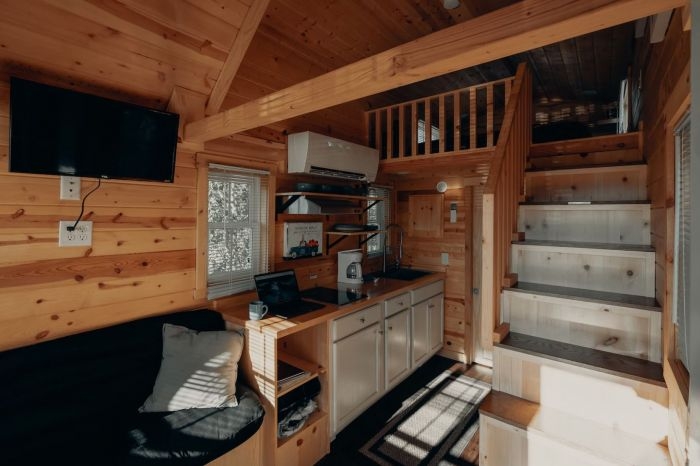Tigín Tiny Homes Proposes a Hemp Micro-Home that is Sustainable, Cheap and Pretty

This is the perfect (micro-)home to go with your cannabis car. Irish company Common Knowledge is introducing the first units of its Tigín Tiny Homes project: tiny homes built out of hemp and cork, with rubber floors and a focus on sustainability and low cost.
Like everywhere else in the world, the cost of living is on the rise in Ireland, and Common Knowledge aims to help those struggling with it by offering a halfway product. That would be the Tigín Tiny Homes, a collective name for an innovative type of tiny house that can be either be purchased as a turnkey unit or as a kit for DIY projects, including suggested materials and retailers, and a price estimate.
Tigín means “small cottage” in Gaelic, and it’s just what this is: a trailer-based tiny home that is built with locally-sourced materials that are also agricultural byproducts.
Because of this, it’s very lightweight and with a small carbon footprint, but relatively durable and comfortable. Since this tiny is only envisioned as a stepping stone towards a forever home, the compromise is ideal – especially since it comes at an affordable price.
The tiny is the result of a longstanding collaboration with Margent Farm, a hemp farm in Cambridgeshire, which provides the hemp for the wall panels.
These panels are made through a combination of cannabis plant fibers and sugar-based resin from agricultural waste, while cork is used for the insulation and natural rubber for the floors. In the future, Common Knowledge hopes to be able to offer certain customization options, which would allow customers to opt out of the cork insulation in favor of another material.
For the time being, though, Common Knowledge offers five such ready-built units, founder and CEO Harrison Gardner tells Dezeen. One unit is priced at €55,000 (which is roughly $55,000 at the current exchange rate), but the goal is to encourage people build their own units, using the free plans and the toolkits from the company, to “empower [them] to take action on the housing and climate crises.”
“The reality for a lot of people is that they can’t afford a home that’s actually ready to move into. They can only afford a home that needs a lot of work, and they can’t afford to do that work and pay rent,” Gardner explains. “The Tiny Home is filling this gap; people can use it for a year or two or three, while they work on their forever home.”
Each unit offers 20 square meters (215.2 square feet) of floorplan divided across two levels – technically, the main floor and a loft. The main sleeping area is in the loft, accessible via a simple wooden ladder.
There’s a large panoramic window with a couch on the ground floor, and it can serve both as reading nook, lounge, and secondary bedroom. There’s room for a small office or a storage room, a kitchenette, and a bathroom with shower and composting toilet.
The layout is nothing out of the ordinary, having already become a standard with small tiny houses. What makes this tiny stand out is the fact that it’s lightweight and sustainable, and can even be rendered fully off-grid, if the owner desires it. For an intermediary home, it’s the closest thing to perfection.
But what makes this tiny truly notable is Common Knowledge’s goal to offer the plans free of charge, as open source material, by the end of the year.
Gardner says that the project is part of a larger initiative called Build School, which already boasts of having taught some 120 people how to build their own projects – and which resulted in the creation of the five units now offered for sale.
With these plans and toolkits, more people will be able to afford a home, temporary as it might be, while acquiring new skills that might serve towards the construction of their dream home. It sure beats learning tiny house building skills from YouTube tutorials.





